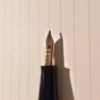The Behaviour Of Pigmented Inks
-
Forum Statistics
355.6k
Total Topics4.6m
Total Posts -
Member Statistics
128,520
Total Members18,857
Most OnlineNewest Member
NewtoNib85
Joined -
Images
-
Albums
-
GlenV
- By GlenV,
- 0
- 2
- 88
-
Dan Carmell
- By Dan Carmell,
- 0
- 6
- 83
-
USG 11
- By USG,
- 0
- 0
- 25
-
4posts
- By Tashi_Tsering,
- 0
- 0
- 89
-
Four Gods series and Pilot BB
- By tacitus,
- 0
- 1
- 1
-


















.thumb.jpg.f07fa8de82f3c2bce9737ae64fbca314.jpg)



desaturated.thumb.gif.5cb70ef1e977aa313d11eea3616aba7d.gif)







Recommended Posts
Create an account or sign in to comment
You need to be a member in order to leave a comment
Create an account
Sign up for a new account in our community. It's easy!
Register a new accountSign in
Already have an account? Sign in here.
Sign In Now